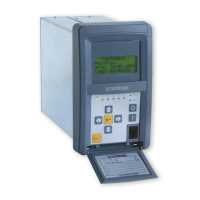
Do you have a question about the Thytronic NA60-MB0 PRON Series and is the answer not in the manual?
| Category | Power distribution unit |
|---|---|
| Series | PRON Series |
| Model | NA60-MB0 |
| Input Voltage | 400Vac |
| Frequency | 50/60Hz |
| Enclosure | Metal |
| Protection | Overload, short circuit |
Configures serial port settings for Master communication with TPR.
Specifies supported transmission modes (RTU) and unsupported modes (ASCII).
Describes the 4 basic Modbus data types supported by TPR.
Lists Modbus functions supported by the TPR.
Explains Modbus exception responses and their meanings.
Defines Modbus/TCP as an extension of Modbus for TCP/IP networks.
Details the requirement for unique IP addresses for TPR devices.
Explains Network Time Protocol for clock synchronization.
Introduces basic data types and their relation to Modbus.
Describes the BIT data type, a single bit of information.
Describes signed variables using 1 byte (8 bits).
Describes unsigned variables using 1 byte (8 bits).
Describes signed variables using 2 bytes (16 bits).
Describes unsigned variables using 2 bytes (16 bits).
Describes signed variables using 4 bytes (32 bits).
Describes unsigned variables using 4 bytes (32 bits).
Describes arrays of BYTE data types.
Describes string data types as arrays of BYTE.
Describes data types representing commands.
Details the fields within the Address Data Table.
Describes the VAR field, containing variable descriptions.
Explains the REF field, indicating the data table.
Describes the IDX field, representing the table position.
Explains the DIM field, the number of registers for data.
Describes the TYPE field for basic data types.
Explains the UM field for Unit of Measure.
Describes the Kv field for scale factor.
Explains the ENUM field for meaning of values.
Describes the physical state of an input.
Describes the logical and failure state of an output.
Demonstrates reading a variable using Modbus.
Shows how to read a BIT data type.
Demonstrates executing a command via Modbus.